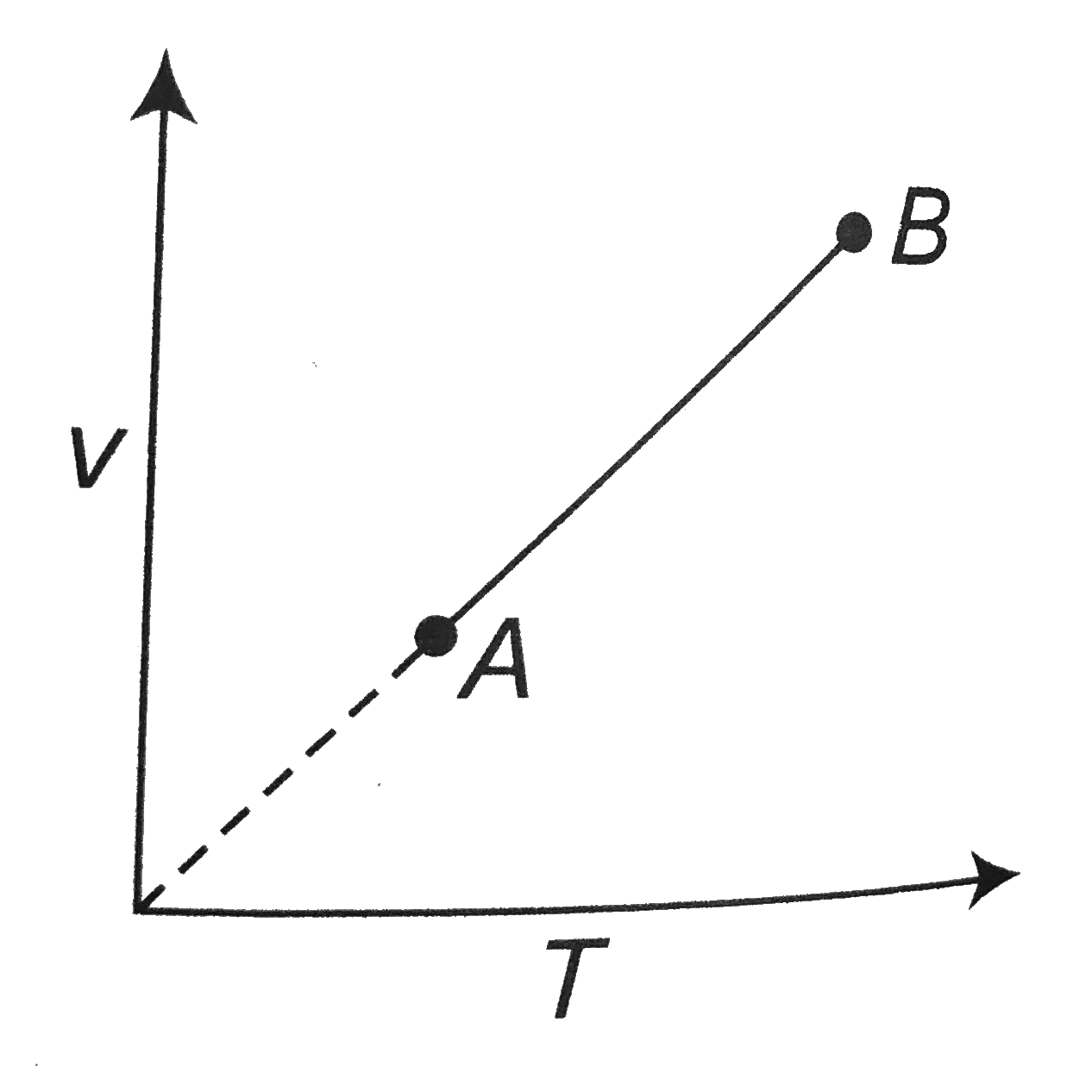What is ΔU for the process described by figure. Heat supplied during the process q= 100kJ
 Solution in Telugu
Solution in Telugu
+50kJ
−50kJ
−150kJ
+150kJ
The correct Answer is:B
ΔU=q+W
W = area under graph =12×1×(1+2)=320×105N−m2
ΔU=+100−32×1051000=100−150=−50J
Topper's Solved these Questions
- CHEMICAL THERMODYNAMICSBOOK - AAKASH SERIESCHAPTER - CHEMICAL THERMODYNAMICSEXERCISE - PRACTICE SHEET (EXERCISE- I) (LEVEL- II (ADVANCED) MORE THAN ONE CORRECT ANSWER TYPE QUESTIONS)
4 Videos
- CHEMICAL THERMODYNAMICSBOOK - AAKASH SERIESCHAPTER - CHEMICAL THERMODYNAMICSEXERCISE - PRACTICE SHEET (EXERCISE- I) (LEVEL- II (ADVANCED) LINKED COMPREHENSION TYPE QUESTIONS)
3 Videos
- CHEMICAL THERMODYNAMICSBOOK - AAKASH SERIESCHAPTER - CHEMICAL THERMODYNAMICSEXERCISE - PRACTICE SHEET (EXERCISE- I) (LEVEL- I (MAIN) STRAIGHT OBJECTIVE TYPE QUESTIONS)
17 Videos
- CHEMICAL THERMODYANMICS BOOK - AAKASH SERIESCHAPTER - CHEMICAL THERMODYANMICS EXERCISE - Questions For Descriptive Answers
28 Videos
- ELECTRON MIGRATION EFFECTS BOOK - AAKASH SERIESCHAPTER - ELECTRON MIGRATION EFFECTS EXERCISE - QUESTIONS FOR DESCRIPTIVE ANSWERS
10 Videos
Similar Questions
In the isothermal expansion of an ideal gas
View SolutionIf the boundary of system moves by an infinitesimal amount, the work involved is given by dw=−PextdV, for irreversible process W=−PextΔV (where ΔV=Vf−Vi). For reversible process. Pext=Pint±dP≅Pint, so for reversible isothermal process W=−nRTInVfVi
2 mole of an ideal gas undergoes isothermal compression along three different paths:
(i) reversible compression from Pi=2 bar and Vi=8L toPf=20 bar
(ii) a single stage compression against a constant external pressure of 20 bar
(iii) a two stage compression consisting initially of compression against a constant external pressure of 10 bar until Pgas=Pext, followed by compression aganist a constant pressure of 20 bar until Pgas=Pext
Work done (in bar -L) on the gas in reversible isothermal compression is:
View SolutionThe intensive property among these quantities is
View SolutionHow does heat of neutralisation value change with the chemical nature of acid and base?
View SolutionHyperconjugation effect is also termed as 'no bond resonance'. Why?
View SolutionAn ideal monoatomic gas undergoes the process AB as shown in the figure. If the heat supplied and the work done in the process are ΔQ and Delta Wrespectively.TheratioDeltaQ : DeltaW is

View SolutionFigure (Five straight line numbered 1, 2, 3, 4 and 5) shows graph of change in temperature Delta T verusus heat supplied Delta Q for different process performed on a gas of one mole.
View Solutiongraph of an ideal gas is as shown in figure. Heat is supplied to the gas in process (s).
View SolutionWhat is DeltaU for the process described by figure . Heat supplied during the process q= 100 kJ
View SolutionAn ideal gas undergoes the process 1 to 2 as shown in the figure, the heat supplied and work done in the process is Delta Q and Delta W respectively. The ratio Delta Q: DeltaW is
View SolutionFor an isobaric process,the ratio of ΔQ (amount of heat supplied) to the Δ (work done by the gas) is (γ=CPCv)
View Solution7. A process is carried out at constant pressure. Given that Delta H is negative and Delta U is less than Delta H (A) The system loses heat and contracts during the process. (B) The system loses heat and expands during the process. (C) The system absorbs heat and expands during the process. (D) The system absorbs heat and contracts during the process
View SolutionIn an isobaric process, the ratio of heat supplied to the system (dQ) and work done by the system (dW) for diatomic gas is
View SolutionStatement I : In an isothermal process the whole heat energy supplied to the body is converted into internal energy.
Statement II : According to the first law of thermodynamics ΔQ=ΔU+pΔV.
View SolutionWhich of the following is are true in the case of an adiabatic process(A)q=W, (B)ΔU=q, (C)q=0, (D)ΔU=W
View Solution
